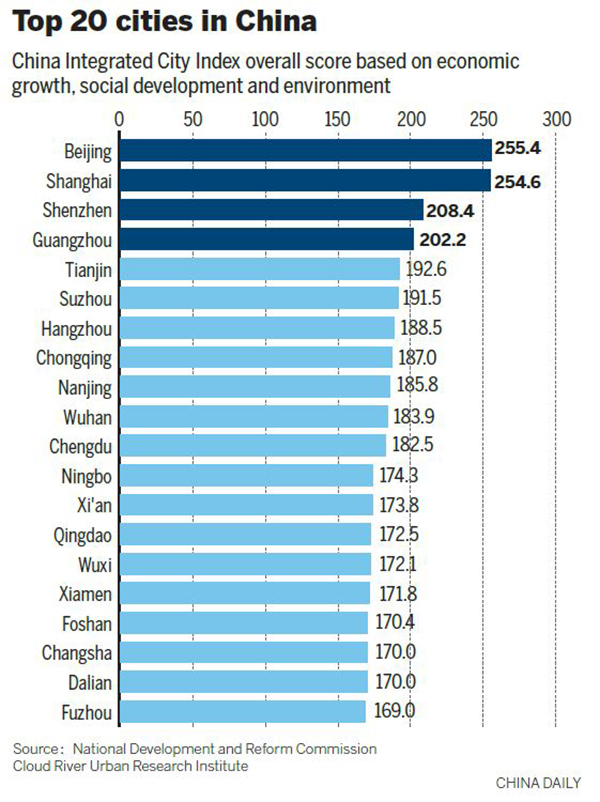Beijing takes first place in ranking of China's cities
Survey appraises economic growth, social development and environment
With a sustainable and balanced growth pattern, Beijing outstripped its closest economic competitor Shanghai to rank at the top of 295 cities nationwide, in a rating from the nation's top economic regulator.The capital's No 1 position is based on economic growth, social development and environment in the China Integrated City Index, co-compiled by the National Development and Reform Commission and Cloud River Urban Research Institute and released last week.
Shenzhen, which ranked top in the environment category, was No 3 overall in the index, following Beijing and Shanghai.
Zhou Muzhi, a professor of urban planning at Tokyo Keizai University and one of lead authors of the study, said that openness and cultural legacy help Beijing stand out from other outstanding economic performers.
"But Beijing needs to make a lot more efforts to improve its environmental situation if it wants to keep its top ranking," said Zhou, adding that surrounding regions need to improve pollution control, especially Hebei province, which relies heavily on natural resources.
"Coal-fired plants located only several hours drive from Beijing remain a major regional source of polluted air in the capital," he said.
Ultimately, only cities with sustainable growth patterns will be able to attract and retain residents, Zhou said, noting that cities located in China's three major urban clusters-the Yangtze River Delta, the Beijing-Tianjin-Hebei region and the Pearl River Delta-currently attract huge population inflows.
Seventeen of the top 30 cities where immigrants exceed permanent residents are located in one of those three clusters, the study showed.
Zhang Xueliang, an economics professor at Shanghai University of Finance and Economics, said future city development is able to take advantage of resources provided by the dominant city in these clusters.
Hebei has challenges to overcome with its heavy industries, but it might face fewer difficulties than other provinces-for example in Northeast China, which grapples with overcapacity-by integrating resources from the capital and taking advantage of convenient waterways in Tianjin, which has the largest artificial harbor in north China, Zhang said.
As for the rust belt Northeast, Xue Lan, dean of the School of Public Policy and Management at Tsinghua University, said the major problem for the old industrial bases is that local officials may sacrifice economic transformation and continue to support industrial overcapacity to maintain short-term growth.
"It could even be possible for the Northeast to exchange a slowdown in short-term growth for healthy development in the long-run," Xue said. "More soft infrastructure investment, say, in education, may be more helpful for the region to retain talented people."
























